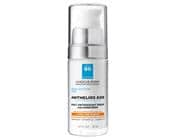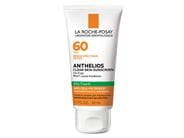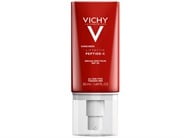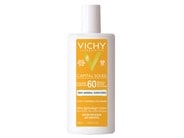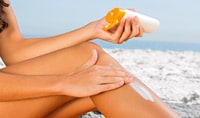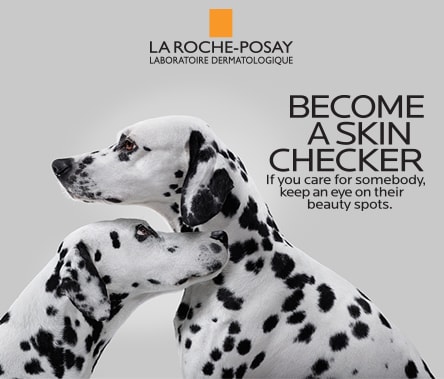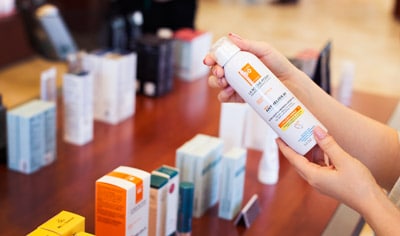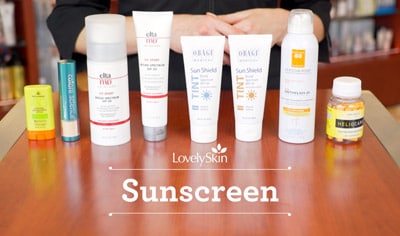
The experts at LovelySkin have partnered with La Roche-Posay to talk about sun safety in honor of Melanoma Awareness Month.
Nothing beats a warm, sunny day, but it’s important to be aware of the effects that sun exposure can have on the skin—especially if you skip the sunscreen. Even short bouts of sun exposure, such as walking to and from the car or making a phone call outside, accumulate over the course of a lifetime and can contribute to premature signs of aging such as fine lines, wrinkles, discoloration, rough texture and loss of elasticity.
According to the Skin Cancer Foundation, the risk of developing melanoma (a potentially life-threatening form of skin cancer) doubles with a history of five or more sunburns—or even just one blistering sunburn in childhood or adolescence. In honor of Melanoma Awareness Month, we’re covering some sun safety essentials, including:
What you should know about melanoma
There are several types of skin cancer, including basal cell carcinoma, squamous cell carcinoma and melanoma. Although most types of skin cancer can be successfully treated when diagnosed early, melanoma poses the greatest risk to overall health. Consider these facts:
Between two and three million non-melanoma skin cancers are diagnosed each year
It’s estimated that 197,700 new cases of melanoma will be diagnosed in the United States this year.
To help spread awareness of sun safety, La Roche-Posay has created the ongoing SOS Save Our Skin campaign to inform the public about the dangers of UV rays and the importance of sun-safe behavior.
The importance of sunscreen
Applying sunscreen daily and taking extra sun-safe measures when spending prolonged periods of time outdoors are the number one ways to protect your skin from damaging UV rays. “My goal with my patients is to find a sunscreen and regimen—which often includes sunscreen as well as physical barriers such as shirts, hats and covers as an overall sunscreen booster—that they want to use and are able to easily incorporate into their daily activities," says board-certified dermatologist and LovelySkin founder Dr. Joel Schlessinger. "There’s such a wide variety of sunscreen products on the market today. From tinted and non-tinted options to formulas that wear well under makeup, the perfect sunscreen for everyone is truly out there.”
When it comes to sunscreen ingredients, there are two main types of filter protection: mineral-based and chemical-based. Mineral (or physical) filters include zinc oxide and titanium dioxide, which are designed to form a barrier on the skin that deflects UV rays, in turn shielding skin from damage. Chemical filters such as avobenzone, homosalate, octisalate and octocrylene are intended to work by absorbing UV rays before they have a chance to damage the skin.
How to choose an effective sunscreen
Sunscreen labels can be confusing, but there are a few rules that can help ensure you select an effective product.
Opt for an SPF of 30 or higher (at the very least).
Look for the term “broad-spectrum,” which indicates a sunscreen that protects the skin from both UVA and UVB rays.
Find a formula that feels comfortable on your skin and apply every two hours when outdoors for an extended period of time.
Choose a water-resistant formula if you’ll be swimming or sweating.
How to optimize your sunscreen’s effectiveness
Once you’ve found the ideal sunscreen, it’s essential to apply it properly. In your morning skin care routine. daily facial sunscreens should be applied as the last step. Extended periods of sun exposure require a few additional steps for optimal UV protection:
Apply sunscreen fifteen minutes before sun exposure and reapply every two hours, or immediately after swimming, sweating or toweling dry.
As a point of reference, you should apply one and a half ounces—or the amount that would fill a shot glass—to effectively protect the entire face and body (and reapply the same amount based on the advice above).
Apply sunscreen before getting dressed or putting on your bathing suit to make sure you don’t miss any spots.
Supplement your sunscreen by wearing protective clothing such as a wide-brimmed hat, long sleeves, pants and sunglasses when possible.
Your summer sunscreen shopping list
To prep for summer, make sure your shopping list includes a broad-spectrum sunscreen such as:
La Roche-Posay Anthelios Broad-Spectrum SPF 100 Melt-In Milk Sunscreen for Body and Face
La Roche-Posay Anthelios Clear Skin Sunscreen with Broad-Spectrum SPF 60
La Roche-Posay Anthelios AOX Daily Antioxidant Serum with Broad-Spectrum SPF 50
Vichy Capital Soleil Face Sunscreen with Broad Spectrum SPF 50
What are melanoma warning signs?
According to the American Academy of Dermatology, one of every five Americans will be diagnosed with skin cancer—which is why it’s important to monitor your moles and skin growths for signs of concern. It’s as easy as ABC (plus D and E). Here’s what to look out for when it comes to moles and other skin growths:
A is for asymmetry: Moles with uneven contours or coloration
B is for border: Irregular or jagged borders
C is for color: A mix of brown, red, black and/or white colors
D is for diameter: Anything larger than the size of a pencil eraser
E is for evolution: Any sudden change in size, shape, thickness or color
If you notice any sudden or suspicious changes in existing moles (or anything new), schedule an appointment with your dermatologist immediately. Your doctor may choose to biopsy suspicious lesions or follow specific spots over time to monitor changes and ensure these spots are not skin cancer.
You can read more about La Roche-Posay’s Anthelios line of sunscreens to find out which will be the best fit for you.
Shop this blog
What's the best La Roche-Posay sunscreen...
5 best Vichy products for anti-aging
Follow us on social
Follow us on social networks and be one of the first to learn about sales, giveaways, and free samples


